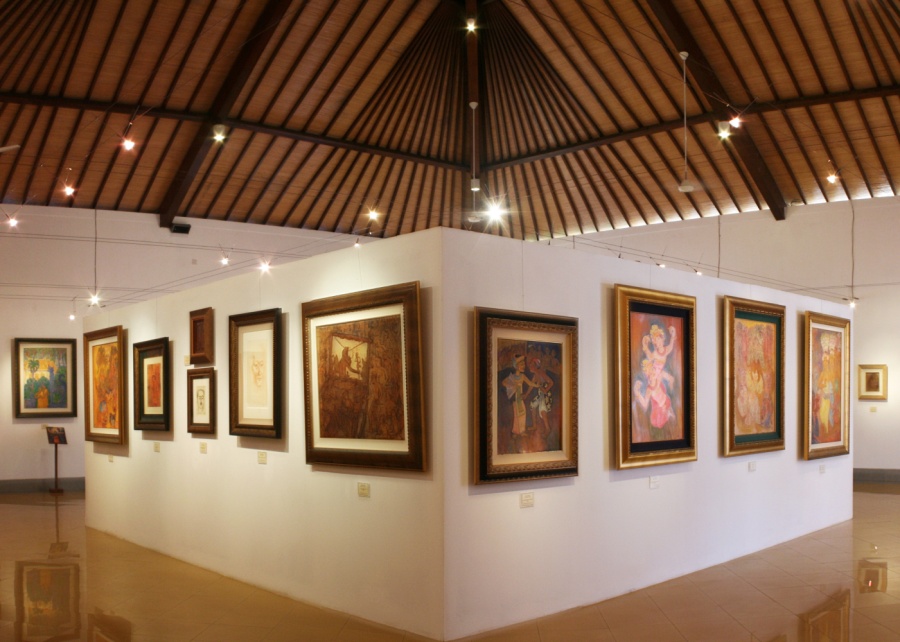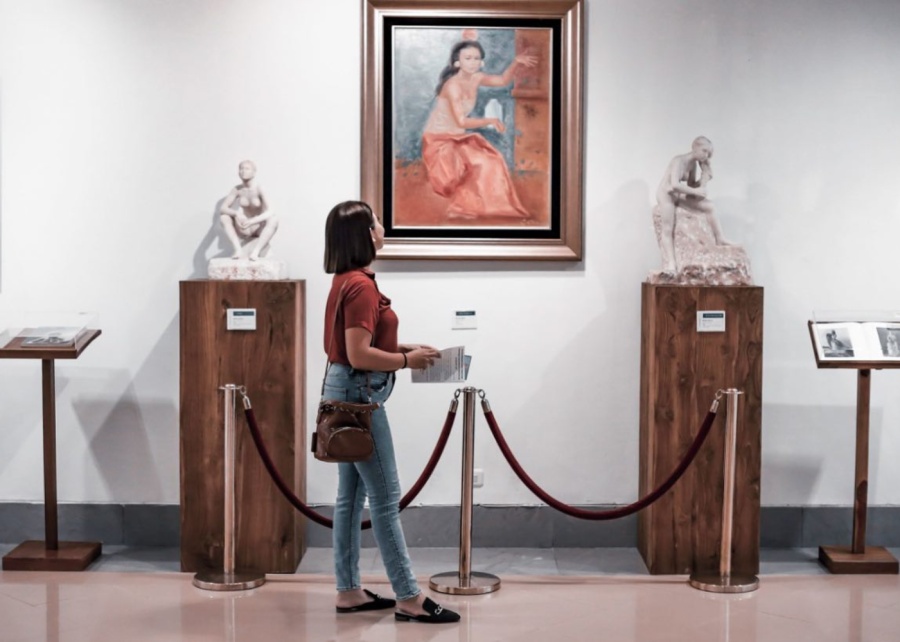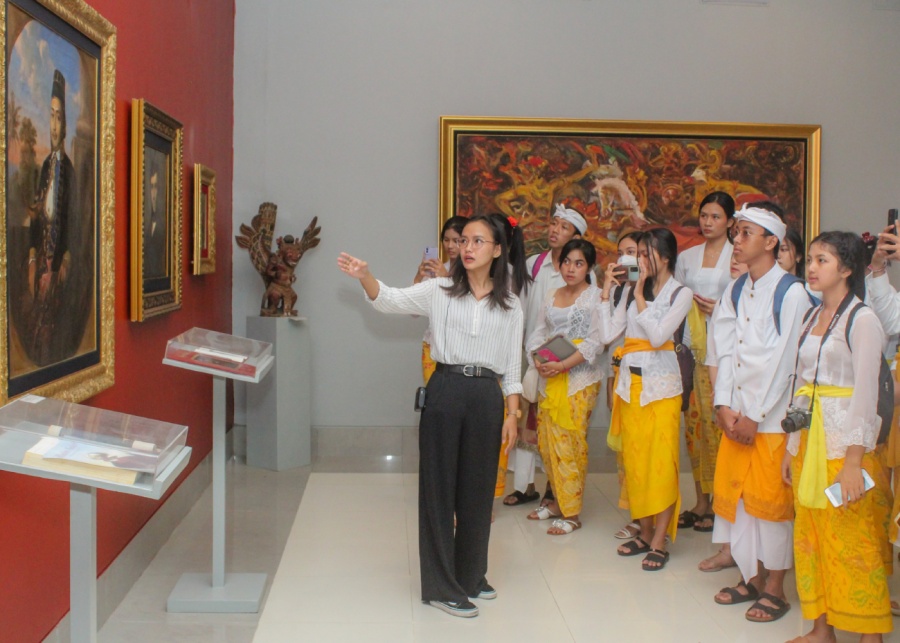
Art, history and creativity under one roof – here’s why this Nusa Dua museum deserves a spot on your Bali itinerary.
If you’ve ever found yourself in Bali craving a break from the beach, this one’s for you. Museum Pasifika is one of the island’s top cultural attractions, home to more than 600 artworks and the largest Asia–Pacific art collection in the region. I went expecting a simple art museum filled with paintings – but what I discovered was so much more. With its Asia-Pacific (Pasifika) theme, Museum Pasifika took me on a soulful journey through Indonesia, Southeast Asia, Polynesia, Melanesia and Micronesia.
In this review, I’ll walk you through my day at Museum Pasifika — from art-spotting and browsing historical artefacts to hands-on workshops and kid-friendly experiences. Whether you’re an art lover or simply searching for things to do in Nusa Dua (or a rainy-day escape in Bali), here’s why Museum Pasifika is worth the visit.
Museum Pasifika: A must-visit cultural gem in Bali

What makes Museum Pasifika so special is how beautifully it captures the artistic and cultural exchange between Asia and the Pacific. Across 11 exhibition halls, the museum showcases over 600 works by more than 200 artists from 25 countries – all telling the story of how this diverse region has inspired painters, sculptors, and creatives through the ages.
As I wandered through the galleries, I recognised pieces by renowned international artists who once called Bali home. Think Miguel Covarrubias, Theo Meier, and Adrien-Jean Le Mayeur – each capturing the island’s spirit and beauty in their own way. Their works are displayed alongside those of Indonesia’s greats, like Affandi and Raden Saleh, whose art is steeped in Indonesian culture and storytelling.
But my favourite part? Despite the 12,000 sqm complex, the museum didn’t feel overwhelming. It’s beautifully curated, airy, and slow-paced – a cultural sanctuary where you can get inspired at your own rhythm.
Join creative workshops and classes at Museum Pasifika

If you prefer a more hands-on experience (or you simply want to take home a piece of Bali), the museum runs creative workshops and classes for both adults and children, each lasting around 1.5 hours. These sessions are led by talented Balinese artists who continue age-old traditions passed down through generations.
I joined the batik class, and even as someone who’s not naturally artistic, I found it easy to follow thanks to the clear guidance. Other options include painting, pottery, crochet, embroidery, wood-carving, perfume-making, and even Balinese dance. Each activity offers a deeper connection to Bali’s artistic heritage, and you’ll leave with a one-of-a-kind souvenir you created yourself.
A thoughtful cultural stop for families in Bali

If you’re travelling with kids, Museum Pasifika is a surprisingly family-friendly cultural experience. The museum’s educational programs are designed to introduce children to art in a way that’s engaging, curious, and easy to understand – no stuffy museum vibes here.
What I love most is how they use storytelling to bring the art to life, explaining who the artists were, what inspired them, and how culture shapes creativity. It helps kids (and honestly, adults too) see art not just as something to look at, but as something deeply felt and lived. The spacious, quiet halls also mean there’s no pressure to rush or constantly say “don’t touch that!” It’s calm, welcoming, and unexpectedly fun for families.
Meet the Founder of Museum Pasifika
During my visit, I was lucky enough to chat with Museum Pasifika’s Founder, Philippe Augier, to talk about its inspiring concept. I asked, in his opinion, what sets Museum Pasifika apart from other museums and galleries in Asia:
“The theme of our museum is the Asia-Pacific region. It’s the first transcultural museum, linking Asia – including Indonesia – with the Oceania part of the Pacific. Our collection features 200 artists from 30 countries across Europe, the Americas, Melanesia and Asia. It includes artwork ranging from primal and classic, to modern too.”
And as for a piece in the collection that speaks to Philippe the most?
“It’s difficult to choose, but probably The Rice Granary by New York–based Mexican artist, Miguel Covarrubias. His work beautifully captures the atmosphere of Bali in the 1930s through the portrait of two young Balinese village girls wearing traditional sarongs. The Rice Granary, produced in three different media – oil on canvas, gouache, and ink-pastel-watercolour – was probably his most important composition upon arriving in Bali after his journey through Tahiti and Polynesia.”
Final Thoughts
I’ve visited a lot of cultural attractions in Bali, but Museum Pasifika genuinely felt like a peaceful pause and a true reminder that Bali’s magic extends far beyond its beaches and nightlife. It’s a gentle cultural space, a celebration of history and creativity, and a beautiful window into how Bali and the Asia-Pacific have inspired the world.
Address: ITDC Bali Tourism Complex, Block P, Benoa, Nusa Dua.
Entrance fee: IDR 100,000 for international tourists and IDR 70,000 for domestic tourists.
Opening hours: Daily, 10am – 6pm.